10 Things You Don't Remember About 90s Food History
- Elexus Jionde

- Apr 12
- 7 min read
Updated: Apr 23

How did Fat-Free dominate the landscape? What happened when some people proposed healthier food on grocery store aisles? Which fast food commercial starred a fallen soviet leader? Which vegetable did George H.W. Bush hate more than any other? Keep scrolling to find out this juicy food history and more!
Peanut allergies were taken more seriously than ever this decade.

“Peanut allergy nothing to sneeze at,” declared a doctor and advice columnist, just one of hundreds of articles this year explaining the threat. The next year, a peanut allergy test was developed, and as the years went on, peanut foods would be phased out of diets, menus, and classrooms. Some experts theorize that peanut allergies grew because before this period, doctors had recommended introducing peanut foods to babies under one so they would gain a tolerance. After they stopped recommending this in the 90s, peanut allergies spiked— but other factors could also be at play.
Children saw an average of 10,000 food commercials a year by 1990 because they were an important consumer group
Children used microwaves at younger and younger ages, sometimes leading to injuries. 62% of American children under thirteen used the microwave one or more times a week. More than ever before, kids were direct targets of grocery consumer marketing. During this decade, they would see 10,000 food commercials a year, many of them directed at them— featuring fun new products like the famous Dunkaroos. Companies copiously studied the top kids meals, and found that pizza, nuggets, hot dogs, burgers, Mac and cheese, spaghetti, fried chicken, tacos, and grilled cheese were their most popular meals. They then set out to make cost-effective and somewhat tasty meals from that list— so stuff like tacos and grilled cheese were dropped. These meals were dripping with sodium and fat, which bugged nutritionists.
George H.W. Bush Hated Broccoli

While Bush waged war against Iraq in 1990, he also waged a war against broccoli. “I'm President of the United States, and I'm not going to eat any more broccoli!” He declared in 1990. Bush mentioned broccoli 70 times while in office, each time with malice in his heart. Mused one columnist, “Bush finally finds something safe to hate.” Although his comments pissed off broccoli producers (with one even presenting Barbara Bush with a bouquet of broccoli and ten tons of the veggie for an upcoming white house dinner), sales of the veggie was boosted by approximately 10%. The ten tons of broccoli was donated to a local food bank.
Women’s Day Magazine hosted a $7500 “How To Get George Bush To Eat Broccoli” Recipe Contest in 1990. An accountant named Priscilla Yee was announced as the winner, because go her ‘broccoli lemon’ sauce— a combination of cream of broccoli soup, mayonnaise, green onion and lemon juice—poured over potatoes. Over amongst the democrats, Hillary Clinton and Tipper Gore playfully campaigned to put broccoli back in the white house.
The Former Leader of the Soviet Union starred in a Pizza Hut Commercial
In 1997, the former USSR leader Mikhail Gorbachev accepted an offer from Pizza Hut to star in a commercial that was filmed in Red Square. Gorbachev refused to eat the pizza, and was paid nearly $1 million to star with his granddaughter Anastasia, which aired the following year internationally, but not in Russia. He said, "I thought that it is a people' s matter -- food. This is why if my name works for the benefit of consumers, to hell with it -- I can risk it.” While the Edge Pizza being marketed didn’t last, nothing said Soviet Union Communism was dead quite like this fast food commercial.
The Food Network Got Hot and Spicy
In 1993 the Food Network launched from New York City on a shoestring budget. The channel would continue the tradition of celebrity chefs and “kick it up a notch,” to borrow the parlance of Emeril Lagasse. Lagasse, a Portuguese-French-American chef with a restaurant in New Orleans, hosted How To Boil Water, which was very popular among the 6.8 million homes reached by the Food Network in 1993. In these early days, chefs had to be trained to know how to cook and talk on camera at the same time— and due to a super tight budget, there was no money or time for re-shoots so mistakes were always aired. One overnight engineer accidentally put porn on the air for two minutes in 1997, which showed advertisers that the channel had a bunch of viewers. The channel quickly expanded, and Emeril got his own shows, Essence of Emeril, and Emeril Live.
The Twinkie Tax

The politics of food and fat reached new levels in 1994 when Kelly Brownell, a psychologist who proposed the nation “get slim with higher taxes” in the New York Times. He wrote:
“Congress and state legislatures could shift the focus to the environment by taxing foods with little nutritional value. Fatty foods would be judged on their nutritive value per calorie or gram of fat; the least healthy would be given the highest tax rate. Consumption of high-fat food would drop, and the revenue could be used for public exercise facilities -- bike paths and running tracks -- or nutrition education in schools.”
This idea, of promoting healthier food and providing healthy programs for everyone, including the poor, was missing that poorer people have limited food budgets so there would need to be an overhaul in the quality of food available at the base level— but this was not the focus of most of the people who pounced on the idea.
The purported “Twinkie Tax” turned into a battle of ‘Merican rights. “The high-fat Gestapo is trying to follow in the footsteps of the smoking Gestapo, in an effort to force the American people to act in the ‘proper’ way,” said Rush Limbaugh. By the way, Rush, who would die from advanced lung cancer in the future, said in 1994, “There is no conclusive proof that nicotine’s addictive... And the same thing with cigarettes causing emphysema, lung cancer, heart disease.”
Anthony Bourdain and The Year of The Restaurant
In 1999, it was reported that over 50% of the average America’s food dollar was being spent outside of the home— and the US Chamber of Conference named 1999 The Year of the Restaurant. The New York Times reported on the new trend of “sexy colorful fruit-filled drinks… vacation style drinks.” Agreed a popular restaurant owner, ''In the mid-80's you had mostly big frozen drinks or liquor on the rocks, but for about the past three years, all our restaurants have had drink menus with special cocktails.” This new trend of restaurants fusing with bars inspired the Zagat guide to publish a New York Nightlife guide. Also in 1999, Anthony Bourdain’s essay, Don’t Read Before Eating This, was published in the New Yorker.
Bourdain wasn’t yet a celebrity chef or world traveller. In the piece, he dragged people who ate well done red meat. “People who order their meat well-done perform a valuable service for those of us in the business who are cost-conscious: they pay for the privilege of eating our garbage. In many kitchens, there’s a time-honored practice called “save for well-done.” In addition to critiquing customers, he revealed restaurant secrets about the reality of kitchen life. He wrote,
“If you are one of those people who cringe at the thought of strangers fondling your food, you shouldn’t go out to eat. By the time a three-star crew has finished [your meal], it’s had dozens of sweaty fingers all over it.”
He added,
“I’m amused when I hear people object to pork on nonreligious grounds. “Swine are filthy animals.” Chicken—America’s favorite food—goes bad quickly; handled carelessly, it infects other foods with salmonella; and it bores the hell out of chefs. It occupies its ubiquitous place on menus as an option for customers who can’t decide what they want to eat.”
His essay made such a splash that he signed a book deal for Kitchen Confidential, which would premiere the following year.
Why Fat-Free Foods Dominated

In 1992 the United States Department of Agriculture issued a Food Pyramid, which incorrectly placed red meat on the same nutritional level as poultry and fish. Fats and oils were restricted, and no nuanced information was included about saturated fat (found in red meat and dairy) versus the good polyunsaturated fat, found in vegetables and fish. As a result, fat is bad and carbs are good became the prevailing sentiment. Atkins Nutritionals products, which were low-carb, had been founded in 1989— but became much more popular during the decade, along with products like SnackWells. These ubiquitous fat-free cookies debuted in 1992 and were packed with carbohydrates. People tended to overeat these, mistakenly believing they were healthy, leading to the term the “Snackwell Effect”.
In 1996, the additive olestra was approved as a fat substitute and used in fat-free products like WOW! chips. It was hyped up because it didn’t add calories, but in the years to come, side effects— like cramping and EXPLOSIVE diarrhea- would lead to it being phased out of American food.
The Rise and Fall of Zima

The alcoholic beverage Zima went nationwide in 1994. Coors put $38 million into promoting it as “zomething different.” The ads were ambiguous about what the beverage was, tempting new drinkers. Coors guessed that 70 percent of America’s regular drinkers tried Zima. The thing is, the 10% proof lightly carbonated beverage attracted women, which Coors hadn’t been anticipating. The drink became a punchline in ongoing jokes as being effeminate, and the fragile masculinity resounded everywhere from David Letterman to Friends to The Simpsons. Coors follow-up to court men, Zima Gold, in 1995, failed. While Zima went in and out of the US market for the next two decades, it was a hit in Japan, where it was not attached to gender.
When McDonald's Tried to Go Rotisserie
McDonalds started a new doomed venture in 1994 called the Hearth Express. Reported the South Florida Sun Sentinel,
"It has neither golden arches nor Big Macs. It does have a counter full of steaming pans of mashed potatoes, creamed spinach, rotisserie chicken, apple turnovers, baked ham and, of course, meatloaf. Lunch costs $4.99 to $5.99, which includes a main dish, two side orders and bread.”
The sole Darien, Illinois location was closed by the following Summer. By the way, rotisserie chickens and homestyle meals were really big this decade, like with the growth of Boston Market, though it expanded too rapidly in the early 90s and ended up filing for bankruptcy in 1998. Even KFC had tried and failed to introduce Colonel's Rotisserie Gold back in 1993, which lasted for three years.

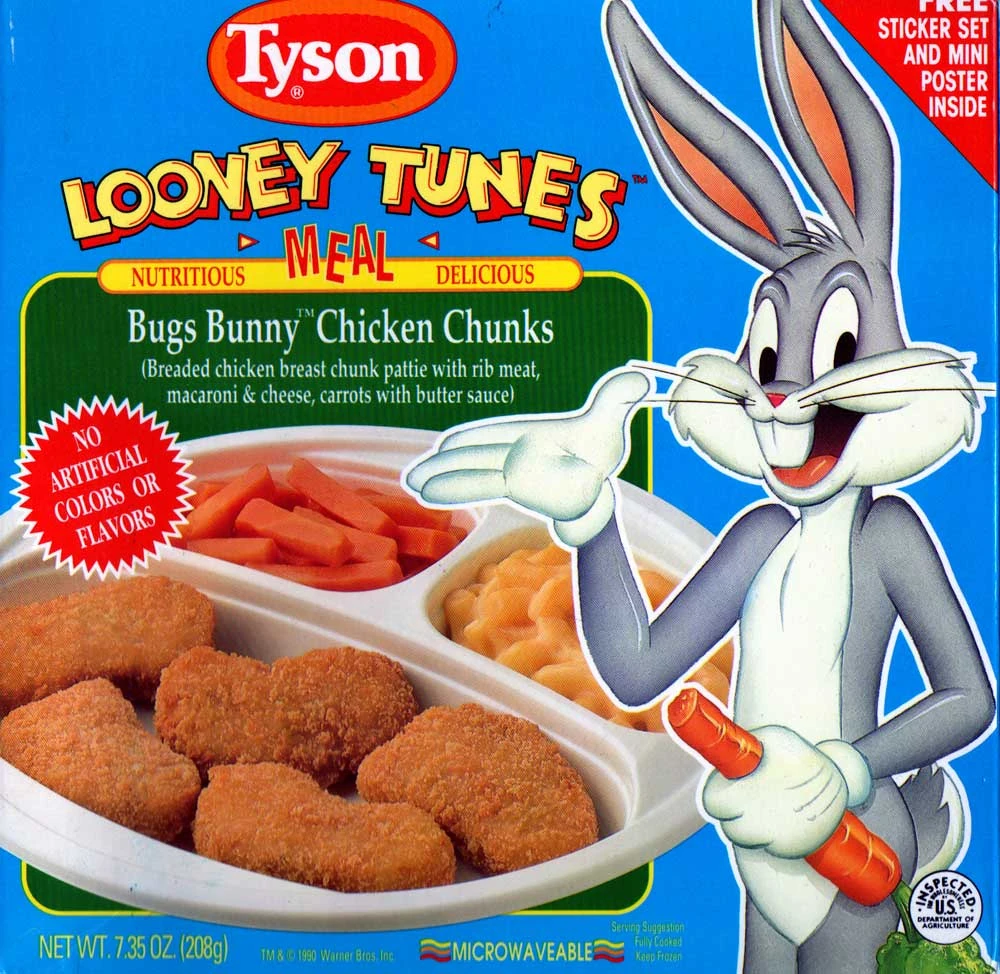



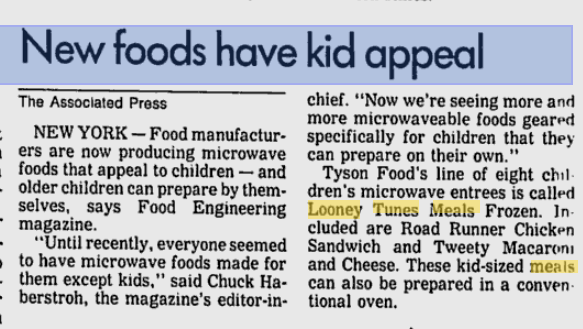







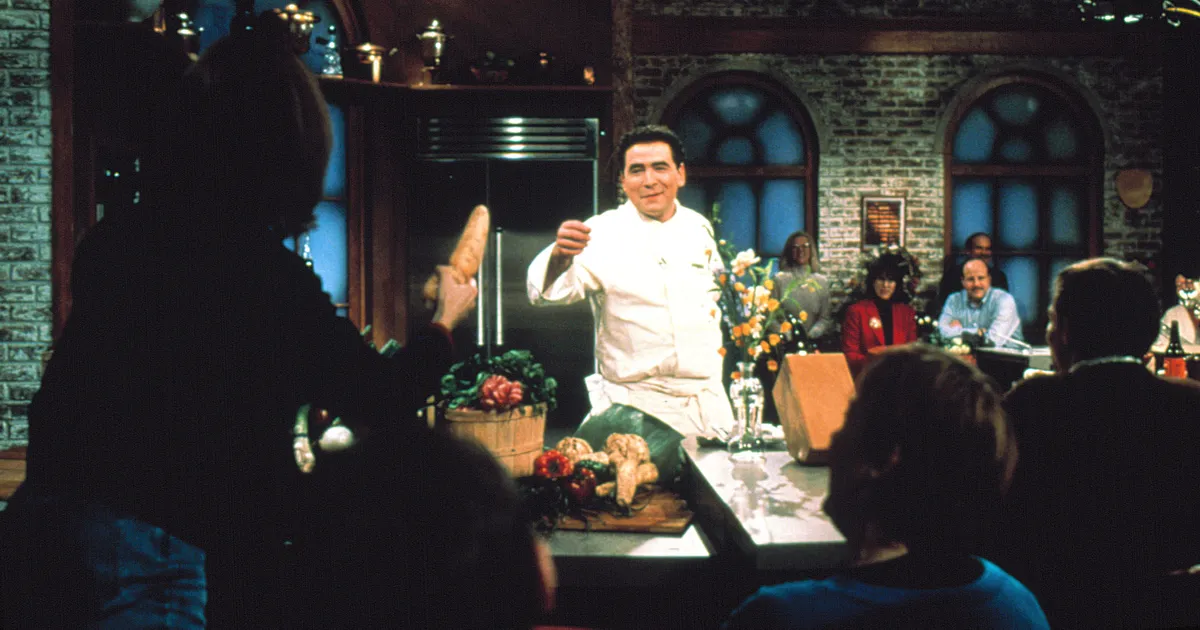


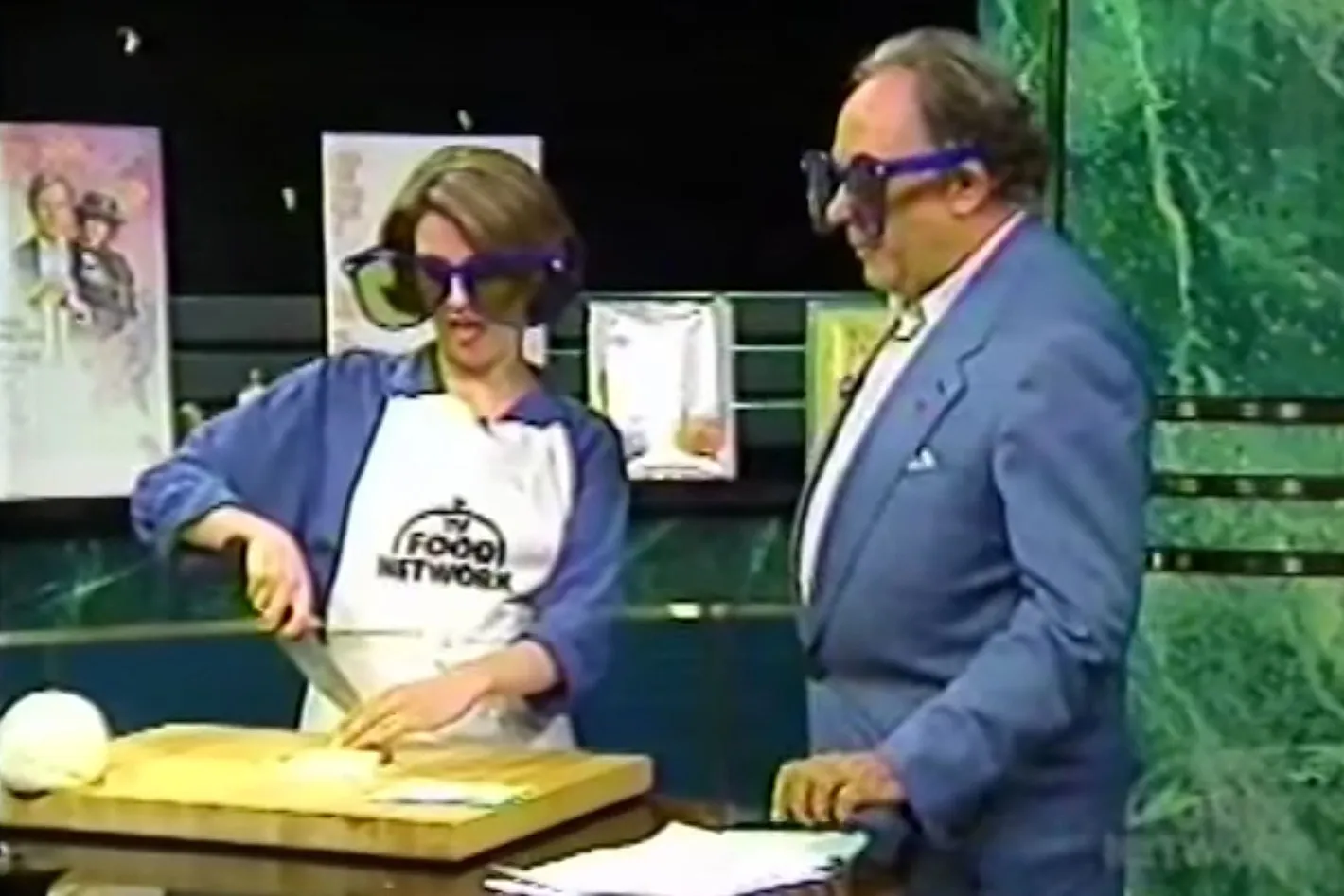
















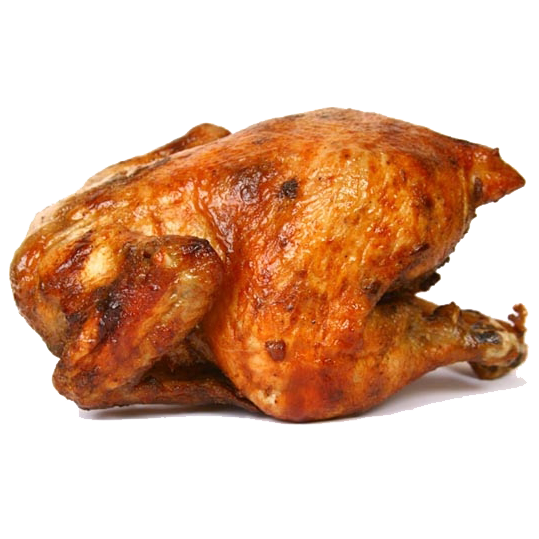














.png)
Comentários